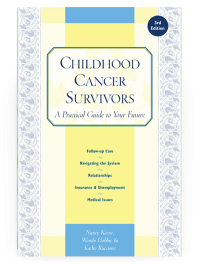Childhood Cancer Survivors
Screening and detection
Screening for problems in the head and neck starts with a careful physical examination of the sinuses, nostrils, and throat. The examination also includes close attention to how your teeth look, how your breath smells, and the condition of the skin and soft tissues in the head and neck. Your healthcare provider should ask questions about your eating habits and digestion, your dental health, and any pain or discomfort in the head and neck region. This examination should include a discussion of the risks of smoking and chewing tobacco.
If the physical examination and discussion uncover possible sinus infections, a sinus x-ray should be ordered and a referral made to an ear, nose, and throat specialist, if necessary. Survivors with headaches or migraines should be referred to a neurologist for a thorough evaluation.
If you have a history of indigestion, difficulty swallowing, or stomachaches, your healthcare provider at the follow-up clinic may order tests (i.e., an upper gastrointestinal or a barium swallow) to see how the stomach empties. Esophageal strictures or esophagitis should be evaluated and treated by a gastroenterologist.
You should get a complete dental examination and cleaning every 6 months if you are a survivor of childhood cancer. Your dentist should refer you to an orthodontist if you have problems with teeth crowding or improper bite.
I was not told about late effects to the teeth before my treatment for Hodgkin’s. As a matter of fact, my orthodontist left my braces in while I was on treatment. When they took them off, my gums were in such bad shape that they bled and bled. I was not given any fluoride during treatment. When they took off the braces, I had a lot of cavities along the front surfaces.
Two years off treatment, my radiation oncologist asked, “Still using your fluoride?” I had never heard that I was supposed to be using fluoride. When I started using fluoride gel, it made me kind of nauseated. So I switched to the over-the-counter liquid called ACT ® . My dentist gave me a lot of good education, and I do really good mouth care now and plan to do it forever.
Table of Contents
All Guides- 1. Survivorship
- 2. Emotions
- 3. Relationships
- 4. Navigating the System
- 5. Staying Healthy
- 6. Diseases
- 7. Fatigue
- 8. Brain and Nerves
- 9. Hormone-Producing Glands
- 10. Eyes and Ears
- 11. Head and Neck
- 12. Heart and Blood Vessels
- 13. Lungs
- 14. Kidneys, Bladder, and Genitals
- 15. Liver, Stomach, and Intestines
- 16. Immune System
- 17. Muscles and Bones
- 18. Skin, Breasts, and Hair
- 19. Second Cancers
- 20. Homage
- Appendix A. Survivor Sketches
- Appendix B. Resources
- Appendix C. References
- Appendix D. About the Authors
- Appendix E. Childhood Cancer Guides (TM)

